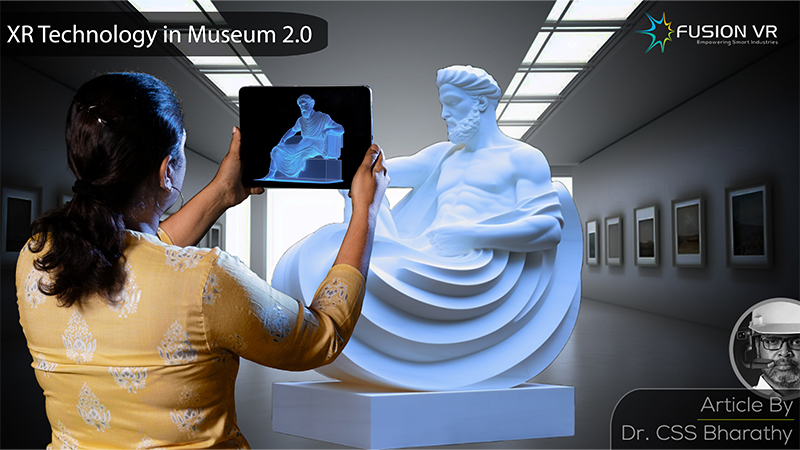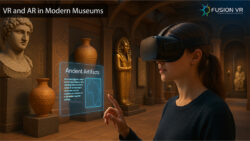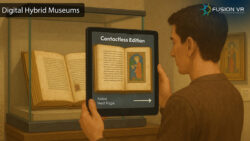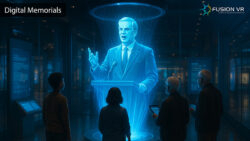No one can escape the impact that technologies like augmented reality are having on our lives. Many of us played Pokemon Go without even realising that we were using AR. Most of us are adopting these technologies and quickly adapting ourselves too. Museums across the world are implementing exciting augmented reality use cases to make museum experiences more immersive, interactive and memorable.
The wonderful thing about AR is that it can be experienced using the most common of modern-day devices, the smartphone. Traditionally, museums have housed various archaeological artefacts, paintings, sculptures, figurines etc. Most of these would have a small plaque or display that gives the name and a short description of the item on display.
Only the really disciplined ones read every information display, while most of us walk past it or take a picture for sharing with family and friends. A wonderful opportunity to learn more about it is lost as the museum is not designed to be interactive and engaging.
We can Upgrade this by just deploying augmented reality technologies in museums. How?
The first step is to develop a use case for the most prominent, popular and important exhibits by creating experiences with these exhibits that engage each visitor. However, this can’t be done by just the museum alone. A team of AR solutions developers or vendors, along with museum curators, historians, artists, content writers, engineers and technicians, are needed at a minimum for implementing augmented reality in museums.
The collaboration of these people is essential to create, installing, operating and maintaining a digital museum and its interactive exhibits. Museums can develop apps that can be downloaded onto a smartphone or tablet and used inside the viewing area. One of the applications is to provide detailed information about an exhibit. All the visitor needs to do is open the app, which in turn opens the device camera and scans the artefact in front of them.
The app launches interactive content that can be read, viewed or listened to, providing the listener with all bits of interesting information about the artefact. The app also allows users to share information or pictures about the artefact with friends and family through its integration with social media.
The exhibit can be made interactive with a quiz and videos from experts. Visitors can ask questions and get expert responses. Visitors can integrate their favourite pictures of themselves with the artefact and create their own selfies. With these apps, the visitors’ experience is more personalised and unforgettable.
AR-enabled animation can be provided to enable viewing the artefact in greater detail across all axes. This is particularly useful for students to help them learn about exhibits in greater depth. The museum visit for kids is like having a more relaxed learning experience outside the classroom.
There are multiple interactive exhibits at various museums across the country and the world. AR can enable a wide range of experiences without any limitations. In addition, this technology can be used to develop AR experience centres.
AR can also be integrated with learning and development applications to help broaden the spectrum of learning opportunities. Such approaches will change the way museums are perceived and experienced today and in the future.
Fusion VR is leading the effort to conceptualise, create and execute exciting virtual reality and AR museum experiences in India. We encourage you to check our website to learn more about interactive museums, corporate experience centres and how our efforts are helping transform the museum scene towards greater interactivity and engagement.





